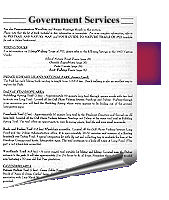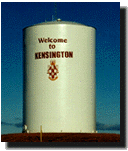
 The
first formalized government system introduced to Prince
Edward Island was the colonial government imposed by
Great Britain when that country won title to the Island
in the mid-1700s. The Island colony obtained responsible
government in 1851 and, in 1873, Prince Edward Island
became Canada’s sixth province. Today, Island
citizens have the unique benefit of having one provincial
representative for every 5,000 people—other Canadian
provinces have many fewer representatives per capita. The
small size of our Island means that individual citizens
have greater relative power. Often, Islanders know their
MLA (Member of the Legislative Assembly) personally or,
if they do not, they know that their representative is
approachable and prepared to listen to their concerns.
Few other political systems can boast such a close
relationship between governments and communities.
The
first formalized government system introduced to Prince
Edward Island was the colonial government imposed by
Great Britain when that country won title to the Island
in the mid-1700s. The Island colony obtained responsible
government in 1851 and, in 1873, Prince Edward Island
became Canada’s sixth province. Today, Island
citizens have the unique benefit of having one provincial
representative for every 5,000 people—other Canadian
provinces have many fewer representatives per capita. The
small size of our Island means that individual citizens
have greater relative power. Often, Islanders know their
MLA (Member of the Legislative Assembly) personally or,
if they do not, they know that their representative is
approachable and prepared to listen to their concerns.
Few other political systems can boast such a close
relationship between governments and communities. Today, the provincial legislature has 27 members; one elected from each district or riding on the Island. The Canadian Constitution dictates the jurisdictions in which the provincial government has autonomy from the federal government. As of 1999, Prince Edward Island’s First Minister and Executive Council (commonly referred to as the Premier and Cabinet) have divided the Province’s administrative responsibility among eight departments: Agriculture and Forestry; Community Services and Attorney General; Education; Development; Fisheries and Tourism; Health and Social Services; Provincial Treasury; Technology and Environment; and Transportation and Public Works.
Since Canada is a constitutional monarchy, the head of state in the province is the Lieutenant Governor, who represents the King or Queen. It is in this capacity that the Lieutenant Governor officially opens the legislative session and gives Royal Assent to bills passed by the Legislature. The Premier, or First Minister, is the leader of the government, technically appointed to the position by the Lieutenant Governor. The Premier is an elected member of the Legislature and leader of the party that wins the most seats in the election. The Executive Council, or Cabinet, is made up of elected legislators. Each government department is overseen by a member of the Cabinet.
In Canada, citizens are entitled to vote once they have reached 18 years of age. Having reached the age of majority, any citizen can also be elected to the provincial Legislature or a municipal council. Candidates are usually nominated through a political party but some also run independently. The three major political parties in Prince Edward Island are the Liberal Party, New Democratic Party, and the Progressive Conservative Party. Governments are elected for a maximum mandate of 5 years.
 The
provincial government has jurisdiction over the entire
province. Incorporated municipalities, however, take
responsibility for many services and community programs
within their boundaries. Municipal governments levy taxes
or apply fees to pay for these services. Incorporated in
1914, the Town of Kensington, for example, provides the
following municipal services: recreation programs, water,
sewerage, fire protection, and police protection. The
Town Council also takes responsibility for attracting
small businesses to the industrial park, attracting or
initiating the development of businesses and
accommodations within the Town, developing residential
areas, and fostering a warm community atmosphere. The
Town recreation department maintains the municipal park,
and the Edward Van Knoughnet Swimming Pool.
The
provincial government has jurisdiction over the entire
province. Incorporated municipalities, however, take
responsibility for many services and community programs
within their boundaries. Municipal governments levy taxes
or apply fees to pay for these services. Incorporated in
1914, the Town of Kensington, for example, provides the
following municipal services: recreation programs, water,
sewerage, fire protection, and police protection. The
Town Council also takes responsibility for attracting
small businesses to the industrial park, attracting or
initiating the development of businesses and
accommodations within the Town, developing residential
areas, and fostering a warm community atmosphere. The
Town recreation department maintains the municipal park,
and the Edward Van Knoughnet Swimming Pool. Police | Fire | Education | Health | Waste Management